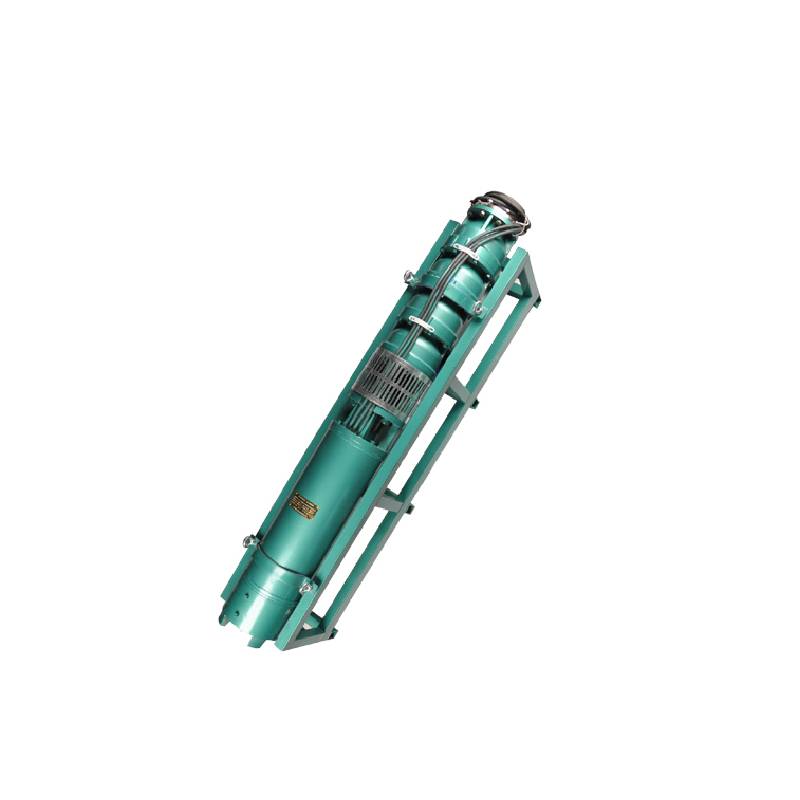Nov . 22, 2024 09:00 Back to list
how does submersible well pump work
How Does a Submersible Well Pump Work?
A submersible well pump is a crucial piece of equipment used for extracting water from underground sources, making it an essential component in many residential and agricultural applications. These pumps are designed to operate underwater, often submerged deep within a well, facilitating the efficient movement of water to the surface. Understanding the workings of a submersible well pump helps in appreciating its importance and effectiveness.
Components of a Submersible Well Pump
At its core, a submersible well pump consists of several key components that work together to accomplish the task of pumping water. These include
1. Pump Motor The motor drives the impeller of the pump, generating the necessary hydraulic energy to move water. Typically, the motor is specifically sealed to prevent water intrusion, allowing it to function efficiently even underwater.
2. Impeller This is a rotating component that pushes water through the pump. Each rotation creates a low-pressure area, allowing water to be drawn into the pump from the well.
3. Bowl Assembly The impeller is housed within a series of bowls that increase the pressure of the water as it moves through the pump. Each stage of the bowl assembly contains an impeller and diffuser that contribute to boosting the water’s pressure.
4. Suction and Discharge Lines The pump is connected to piping that not only allows for water to enter the pump but also enables the movement of water to the surface. The discharge line carries the extracted water to a storage tank or directly into the home or irrigation system.
5. Pump Seal This component is critical in preventing water from leaking into the motor compartment. Effective sealing ensures the longevity and reliability of the pump.
How the Pump Operates
The operation of a submersible well pump can be divided into several stages
1. Starting the Pump When the pump is powered on, the electric motor begins to run. The driver uses either a control panel located on the surface or a float switch that automatically engages the motor when water levels drop below a certain point.
how does submersible well pump work

2. Water Entry As the impeller spins, it creates a vacuum that draws water into the pump via the suction inlet. The water enters through ports located at the bottom of the pump.
3. Pressurization Once the water flows into the bowl assembly, the impeller pushes it upward. The design of the impeller along with the shape of the bowl creates a centrifugal force that increases the pressure on the water, allowing it to rise through the pump.
4. Rising Water The pressurized water travels up through the stages of the pump and then exits through the discharge outlet. The multi-stage design means that the pump can create high pressure even for deep wells.
5. Water Delivery Finally, the water is expelled up the discharge pipe to a storage tank, household plumbing system, or irrigation setup, depending on the system’s design.
Advantages of Submersible Well Pumps
Submersible well pumps come with numerous advantages
- Efficiency By operating underwater, these pumps have less work against gravity, making them more efficient than other types of pumps.
- Durability Designed to withstand corrosion and wear from water, submersible pumps typically have a longer lifespan.
- Quiet Operation Because the pump is submerged, it operates more quietly compared to surface pumps.
- Space Saving Submersible pumps do not require above-ground components, saving space and improving aesthetics for residential areas.
Conclusion
Submersible well pumps are vital for effective and efficient water extraction from deep sources. Understanding how these pumps work—from their key components, operation, and advantages—provides insight into their crucial role in meeting water needs in various settings. Whether for domestic use or agricultural irrigation, submersible well pumps are designed to deliver reliability and efficiency, ensuring that water is readily available when it’s needed most.
-
Submersible Water Pump: The Efficient 'Power Pioneer' of the Underwater World
NewsJul.01,2025
-
Submersible Pond Pump: The Hidden Guardian of Water Landscape Ecology
NewsJul.01,2025
-
Stainless Well Pump: A Reliable and Durable Pumping Main Force
NewsJul.01,2025
-
Stainless Steel Submersible Pump: An Efficient and Versatile Tool for Underwater Operations
NewsJul.01,2025
-
Deep Well Submersible Pump: An Efficient 'Sucker' of Groundwater Sources
NewsJul.01,2025
-
Deep Water Well Pump: An Efficient 'Sucker' of Groundwater Sources
NewsJul.01,2025
-
 Submersible Water Pump: The Efficient 'Power Pioneer' of the Underwater WorldIn the field of hydraulic equipment, the Submersible Water Pump has become the core equipment for underwater operations and water resource transportation due to its unique design and excellent performance.Detail
Submersible Water Pump: The Efficient 'Power Pioneer' of the Underwater WorldIn the field of hydraulic equipment, the Submersible Water Pump has become the core equipment for underwater operations and water resource transportation due to its unique design and excellent performance.Detail -
 Submersible Pond Pump: The Hidden Guardian of Water Landscape EcologyIn courtyard landscapes, ecological ponds, and even small-scale water conservancy projects, there is a silent yet indispensable equipment - the Submersible Pond Pump.Detail
Submersible Pond Pump: The Hidden Guardian of Water Landscape EcologyIn courtyard landscapes, ecological ponds, and even small-scale water conservancy projects, there is a silent yet indispensable equipment - the Submersible Pond Pump.Detail -
 Stainless Well Pump: A Reliable and Durable Pumping Main ForceIn the field of water resource transportation, Stainless Well Pump has become the core equipment for various pumping scenarios with its excellent performance and reliable quality.Detail
Stainless Well Pump: A Reliable and Durable Pumping Main ForceIn the field of water resource transportation, Stainless Well Pump has become the core equipment for various pumping scenarios with its excellent performance and reliable quality.Detail
